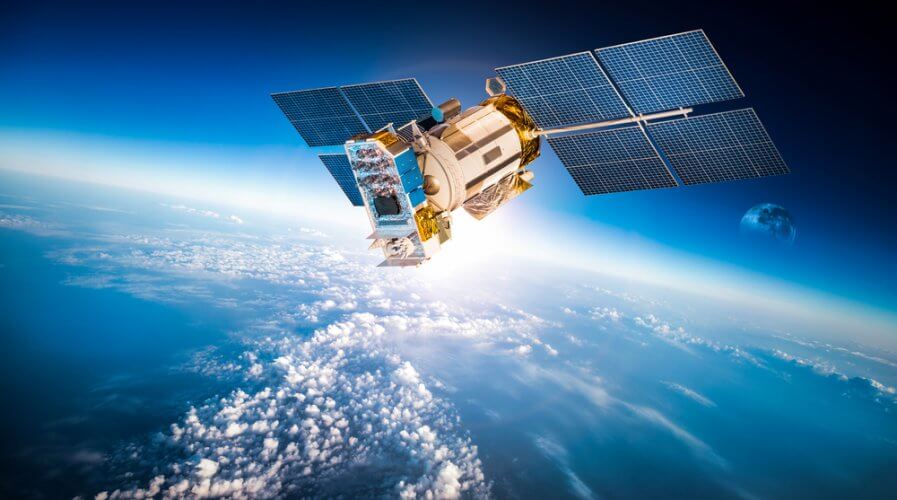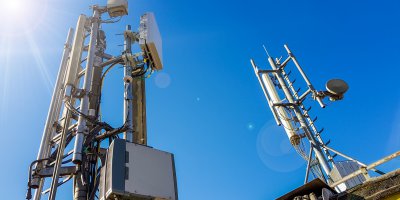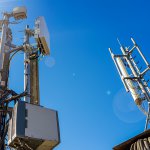
Satellites are key to a successful 5G deployment . Source: Shutterstock
Why satellite plays a crucial role in the roll-out of 5G
AS the world becomes increasingly interconnected, the demand for a faster and more reliable network grows.
5G promises ultra-fast data transmission, high reliability, and low latency. As a result, you can transfer more data with limited delays between devices, which will bring improved real-time capabilities.
Satellites are important to realize the potential of the 5G network. Fiber cables, which make up the backbone of 4G networks, have reached its limitations. A provider that continues to build on top of the existing infrastructure would only be burning money.
In an interview with Tech Wire Asia, Semir Hassanaly, Market Director for Cellular Backhaul and Trunking, Newtec, explained that satellites can reach more areas compared to fiber optics.
The marriage between satellite and wireless
Satellites take into account bandwidth, latency, network conditions and other application-specific requirements, then provision traffic based on availability.
“It is likely that 5G will first address urban areas and expand gradually to semi-urban areas,” Hassanaly suggested.
This is not to say satellites will make cabled connections redundant – in fact, satellites act as a link for areas with a limited connection to the main grid. The benefits of satellites are more prominent in rural areas, where 4G connections are limited due to lack of infrastructure availability.
In urban areas where the 4G connection is strongest, the role of a satellite is to ease any congestion in network traffic.
“It’s crucial that seamless connectivity is enabled in urban and rural areas for emergency services, broadcast or multicast and network offload schemes, aero and maritime mobility, connected cars and mobile backhaul,” Hassanaly said.
The practical uses for businesses
Various industries have begun looking at implementing 5G to improve data transmissions and communications. Some of the core uses including data transmission to devices, feeding data to network towers, and communications on the move (including on airplanes, trains, and out on sea).
These core capabilities will power businesses, such as manufacturing robots, power plants, and IT businesses. Especially with the advent of the internet of things (IoT), businesses operating in rural areas deploying connected sensors, can look forward to a more stable data connection. As a result, they can get more accurate results in real-time.
To achieve complete coverage with very high reliability, providers should rely on a combination of multiple wireless resources such as Wifi, WiGig, and satellite. In this case, interoperability becomes a challenge, as multiple technologies must co-exist to deliver services in these environments.
The European Space Agency (ESA) and a range of industrial companies are currently trialing the functionality, capability, and performance of 5G networks when paired with satellites.
Why is it not available yet?
One of the largest hurdle for adopting satellites at the moment, is the lack of availability of spectrums. Spectrums are allocated frequency bands that operators are allowed to work on.
“Spectrum is like gold dust for operators across the industry,” Hassanaly noted. “Clearing the C-band spectrum for terrestrial use will enable a more coordinated 5G rollout for operators, feeding the growing need for capacity. It will be necessary for satellite operators to work out where they can clear parts of the C-band to then offer to terrestrial operators.”
Hassanaly would be speaking more about the significance of clearing spectrums and how that will drive 5G adoption at the ConnecTechAsia summit in Singapore next week.
In a nutshell, bands that are currently in use are insufficient to respond to the growth in data demand. Satellite operators need to allocate additional spectrum, in order to meet that demand. Hassanaly advised spectrums to be allocated at an international level, so that bands don’t have to be obtained on a country-by-country basis.
All about the customers
As satellite spectrums become available, the cost of operations for a network provider will also reduce.
Ultimately, it is down to end users, Hassanaly said. “It’s crucial when unleashing a new network such as 5G, that end users benefit from its unprecedented potential.”
For network operators and carriers, it is difficult to constantly find new ways to upsell services, without impacting customer satisfaction.
Already, Hassanaly observed that Netflix has partnered with Indonesian operators to offer content streaming on top of video data plans, without additional charges.
In the future, he predicted that mobile operators will continue with unlimited data schemes. However, the revenue streams will come mainly from services and applications that come along with the data schemes.
READ MORE
- Ethical AI: The renewed importance of safeguarding data and customer privacy in Generative AI applications
- How Japan balances AI-driven opportunities with cybersecurity needs
- Deploying SASE: Benchmarking your approach
- Insurance everywhere all at once: the digital transformation of the APAC insurance industry
- Google parent Alphabet eyes HubSpot: A potential acquisition shaping the future of CRM




